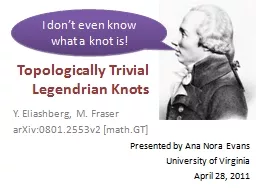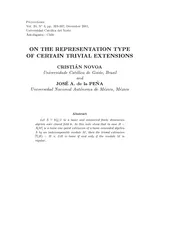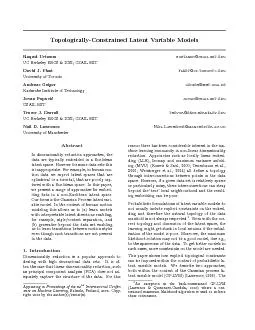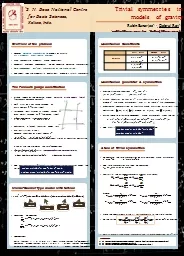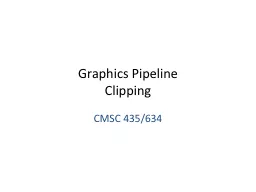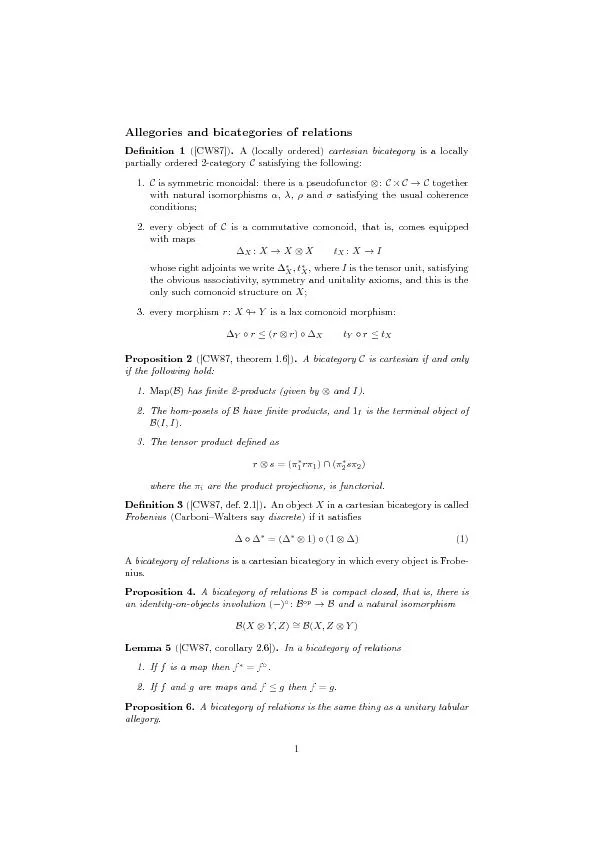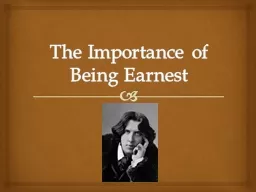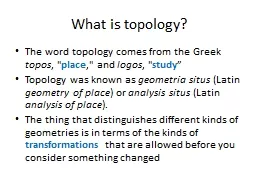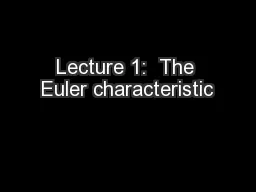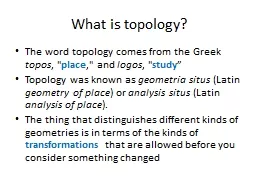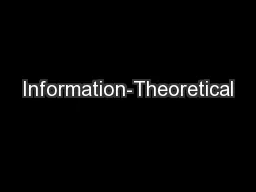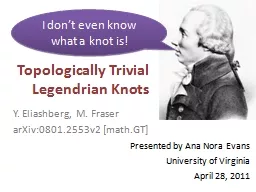PPT-Topologically Trivial
Author : cheryl-pisano | Published Date : 2016-06-16
Legendrian Knots Y Eliashberg M Fraser arXiv08012553v2 mathGT Presented by Ana Nora Evans University of Virginia April 28 2011 I dont even know what a knot
Presentation Embed Code
Download Presentation
Download Presentation The PPT/PDF document "Topologically Trivial" is the property of its rightful owner. Permission is granted to download and print the materials on this website for personal, non-commercial use only, and to display it on your personal computer provided you do not modify the materials and that you retain all copyright notices contained in the materials. By downloading content from our website, you accept the terms of this agreement.
Topologically Trivial: Transcript
Download Rules Of Document
"Topologically Trivial"The content belongs to its owner. You may download and print it for personal use, without modification, and keep all copyright notices. By downloading, you agree to these terms.
Related Documents

